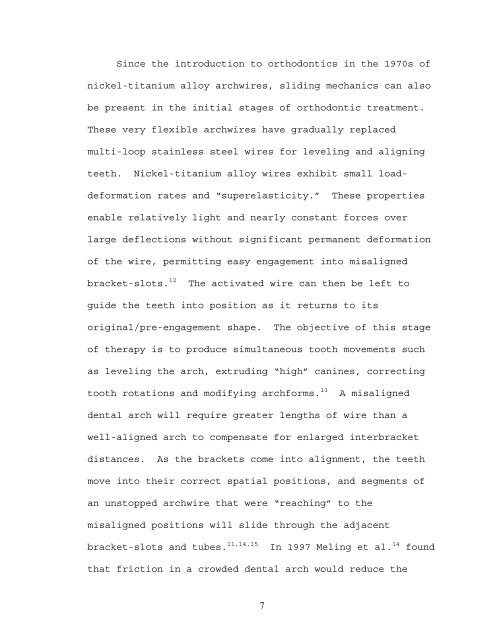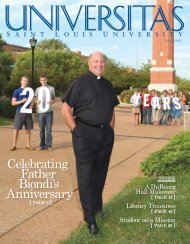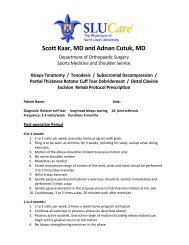The effects of third-order torque and self - Saint Louis University
The effects of third-order torque and self - Saint Louis University
The effects of third-order torque and self - Saint Louis University
Create successful ePaper yourself
Turn your PDF publications into a flip-book with our unique Google optimized e-Paper software.
Since the introduction to orthodontics in the 1970s <strong>of</strong><br />
nickel-titanium alloy archwires, sliding mechanics can also<br />
be present in the initial stages <strong>of</strong> orthodontic treatment.<br />
<strong>The</strong>se very flexible archwires have gradually replaced<br />
multi-loop stainless steel wires for leveling <strong>and</strong> aligning<br />
teeth. Nickel-titanium alloy wires exhibit small load-<br />
deformation rates <strong>and</strong> “superelasticity.” <strong>The</strong>se properties<br />
enable relatively light <strong>and</strong> nearly constant forces over<br />
large deflections without significant permanent deformation<br />
<strong>of</strong> the wire, permitting easy engagement into misaligned<br />
bracket-slots. 12 <strong>The</strong> activated wire can then be left to<br />
guide the teeth into position as it returns to its<br />
original/pre-engagement shape. <strong>The</strong> objective <strong>of</strong> this stage<br />
<strong>of</strong> therapy is to produce simultaneous tooth movements such<br />
as leveling the arch, extruding “high” canines, correcting<br />
tooth rotations <strong>and</strong> modifying archforms. 13 A misaligned<br />
dental arch will require greater lengths <strong>of</strong> wire than a<br />
well-aligned arch to compensate for enlarged interbracket<br />
distances. As the brackets come into alignment, the teeth<br />
move into their correct spatial positions, <strong>and</strong> segments <strong>of</strong><br />
an unstopped archwire that were “reaching” to the<br />
misaligned positions will slide through the adjacent<br />
bracket-slots <strong>and</strong> tubes. 11,14,15 In 1997 Meling et al. 14 found<br />
that friction in a crowded dental arch would reduce the<br />
7
















